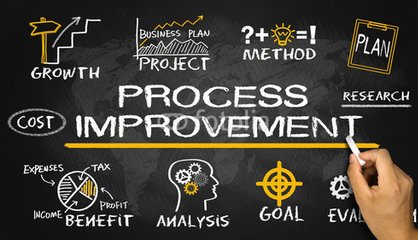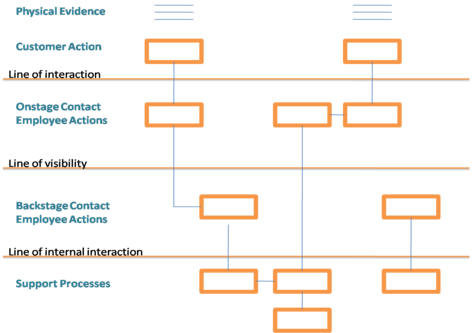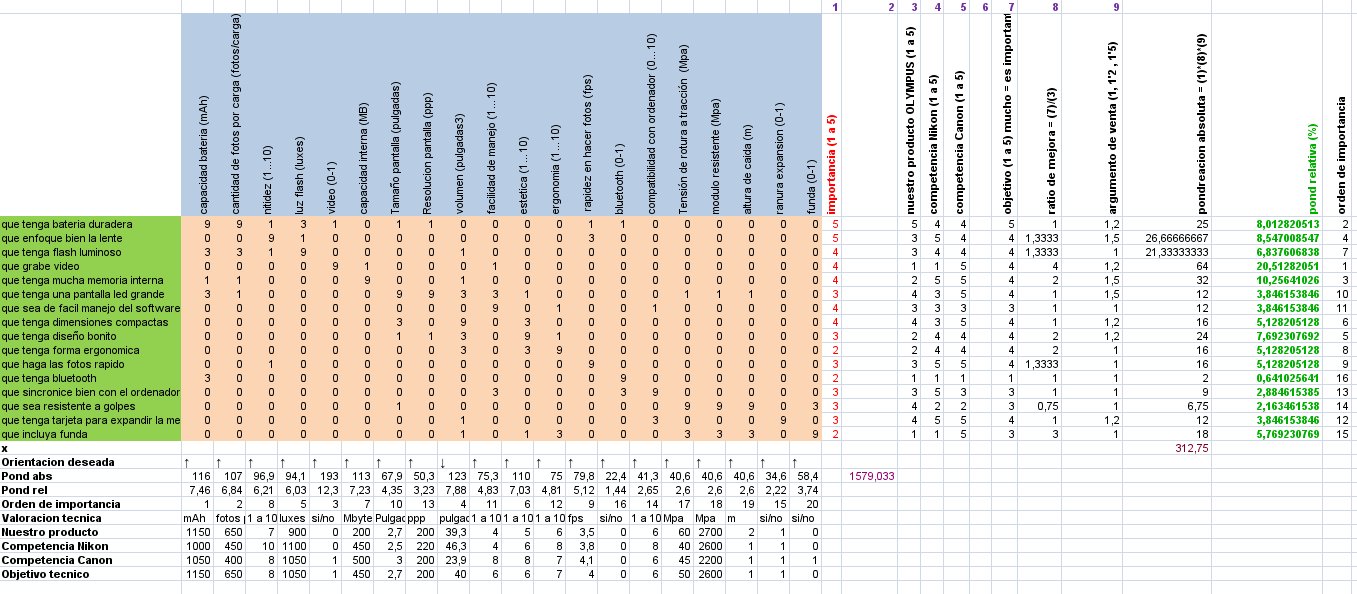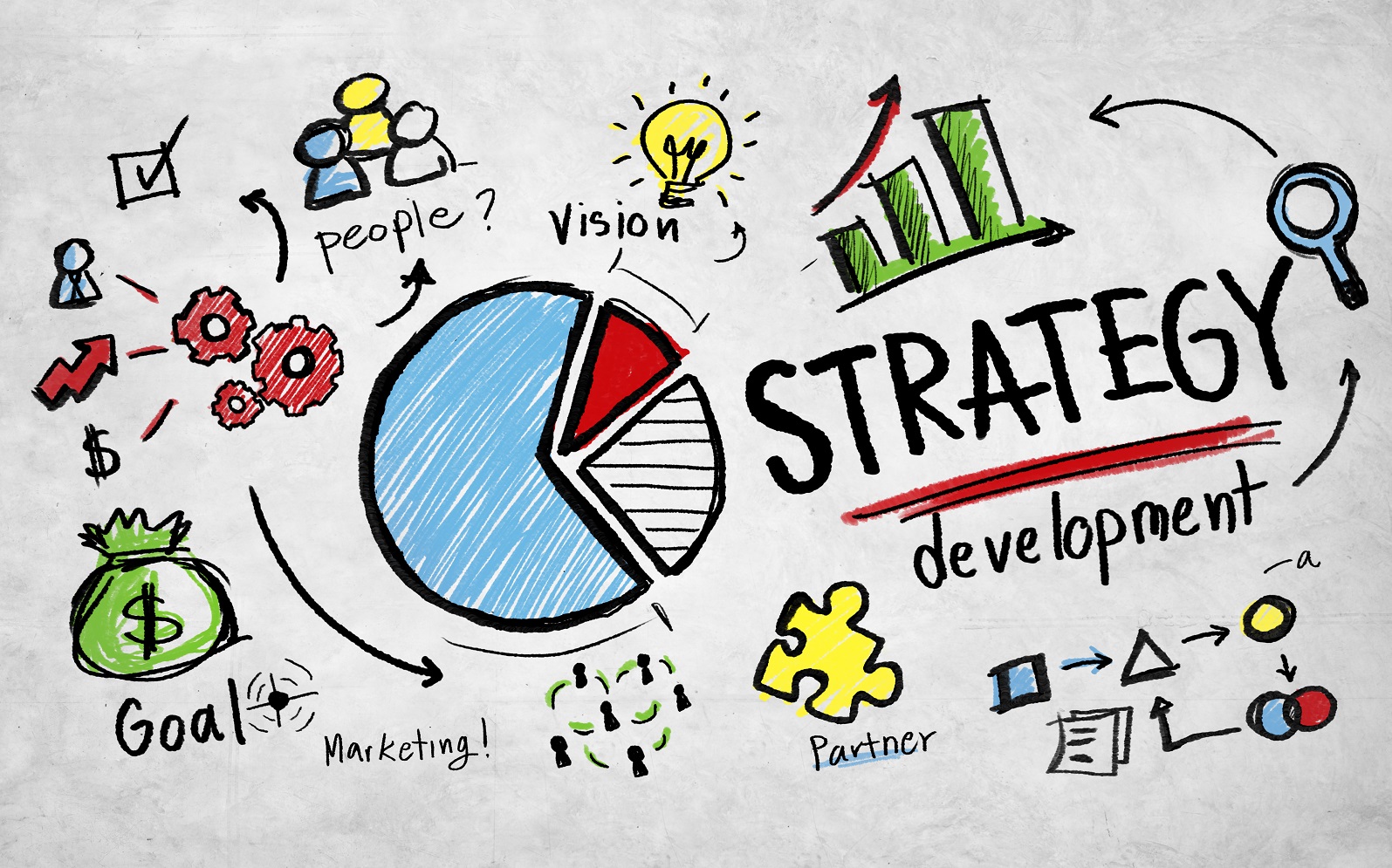Blueprinting method: Analyze your services and optimize them
Blueprinting is a methodology that is based on analyzing, visualizing and presenting a map of services. It serves to see the evolution of a process or the provision of services through a flow chart.
As a final result we will obtain a diagram where the activities of the process are chronologically represented on a horizontal axis. Depending on the proximity to the client these processes or activities will be at one level or another level within a vertical axis.
What do we get with Blueprinting?
We achieve two points of view, within the company (processes) and outside the company (customer experience). Blueprinting focuses on detailing the configuration of a service-based process to achieve an optimal result both inside and outside the company. The philosophy of work is to dismantle the conceptual map of services to achieve continuous improvement through customer satisfaction, as well as increasing the effectiveness and efficiency of processes (associated cost reduction, process waste, etc.).
To achieve success within companies, it is necessary to work under three pillars: developing alternative strategies, focusing on clear objectives and making decisions based on concise data.
From the analysis of the results we develop options to mark a strategy and a posterior evaluation. Always setting some guidelines for action in the face of problems and new challenges, applying competently improvement actions and focusing / sizing efforts.
How do you start working with Blueprinting?
1- First, we have to establish the limits of the system, in this case, we are talking about our services and products. In this way we will be able to visualize a dimension of our study, we refer to the E2E (End to End) of the system. Therefore it is important to reflect the essence of the system in sight, then we have to identify what are the key points of this system, these points are our activities or processes.
This first step will unfold all those processes that have an impact both on the operations of our organization and, on the face of the customer, to know what factors are those aspects that will influence the decision of our brand for another one of the competition.
2- All this we have to take it to a graphic representation, for the representation of this process, we will work on a diagram that marks the interactions with the client, with the company, zones of perception, etc. All this we are going to carry out Through the use of a symbology by all recognizable.
In this representation it is necessary to begin to identify in a clear way that internal processes are intimately related to client experience. We must identify how these two routes, one internal and one external, mark the roadmap to generate the start-up of a service with the maximum possible potential.
Obviously to develop this mapping diagram of both processes and client is necessary to set time guidelines, it seems totally obvious but has a non-trivial character that will define the vision of the E2E process and analyze how they impact the processes inside and outside the Organization through the Customer Journey you achieve to reach how much of good or bad is the customer experience. Mides KPIs on both sides and paramétrizas how to improve internally so that it impacts on customer and vice versa.
This methodology may be accompanied by others such as the Servqual Technique or a DMAIC. With this we will uncover “moments of truth“.
3- When deploying our Process diagram and Customer Journey, we have a general life cycle of our system that makes it easier to identify faults. A widely used practice is to identify faults as potential risk areas for customers, these areas must also have a special attention on our part. The areas where failures occur is where we have to start working, it is very important to define in our protocol of action that is important and critical, we should not direct our actions to something that can “wait” to start with actions that have greater priority.
With this we will avoid the occurrence of these failures and even anticipate future failures that may be blocking our services.
4- Once we have identified the failures and we have set a priority or criticality in front of each of them, whether with affection to our clients or in the internal operative, we have to establish a battery of actions in front of these problems. To the extent possible we will work to minimize current errors and prevent futures to reduce impact.
Let’s see them on a real case, to analyze all the steps we have seen. And pursue those aspects that can generate more impact within the organization.
Of course, from this mapping we can integrate KPIs and customer satisfaction indicators that delimit improvement actions on a specific focus to optimize processes and generate value actions towards our final client.
To gain the trust of the client is to offer a service that meets the needs of this and do not have any fuss, we do not like to be surprised with unwanted bills, services or products that do not meet our needs because we feel cheated and will be very difficult That the customer re-believe in us, that is why he marks the end of the process with a face of ambiguity. Since we must remain alert and give a successful service. In the complicated moments we must get our arsenal and get the customer to move as far as possible from that yellow face to pass to a green of satisfaction.





